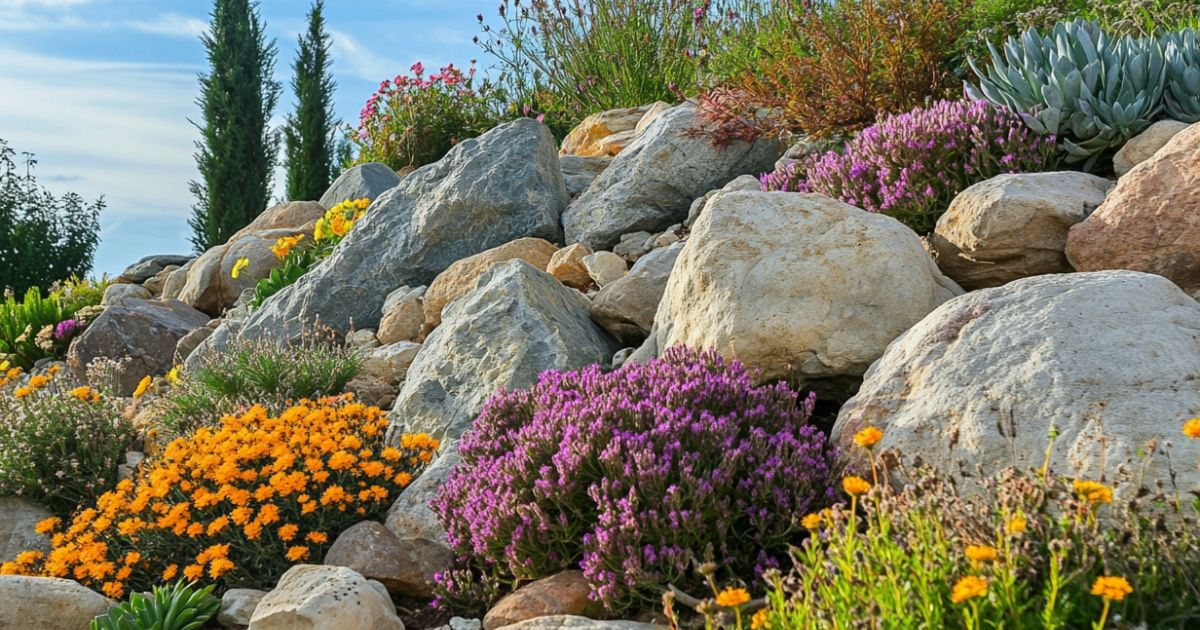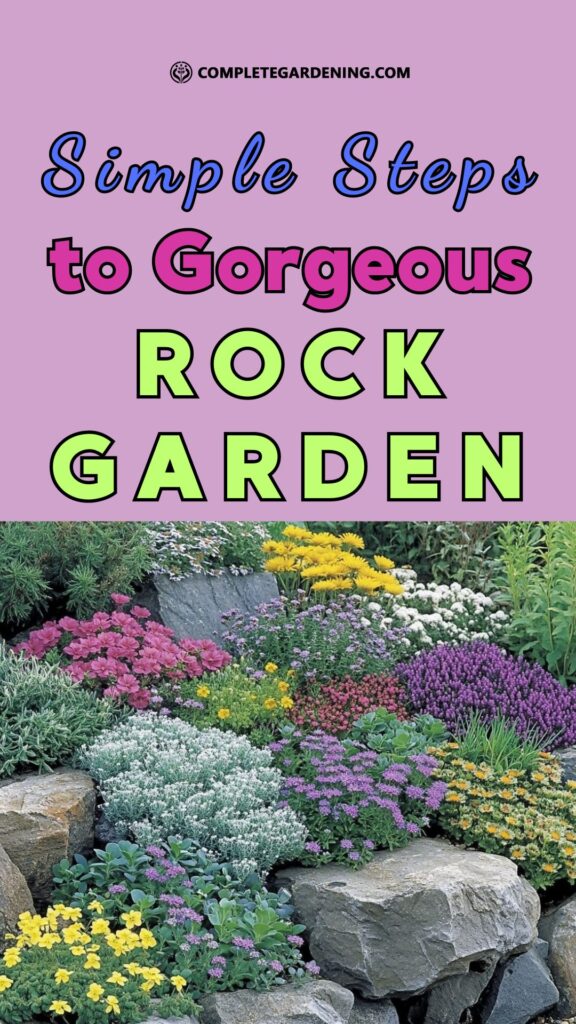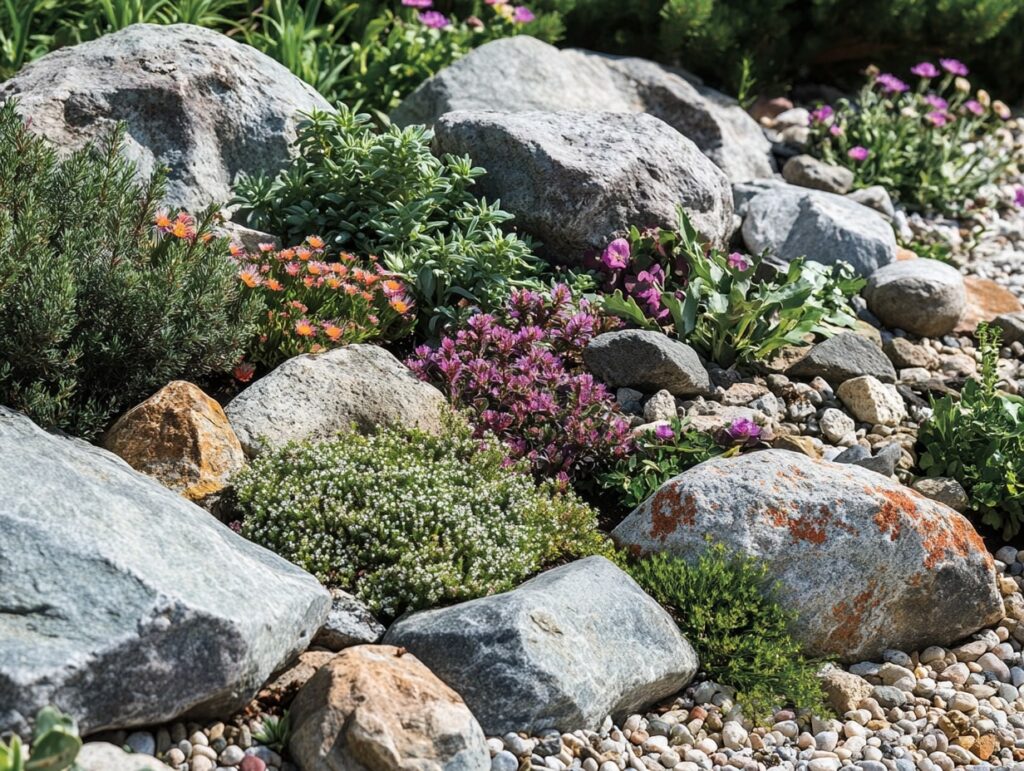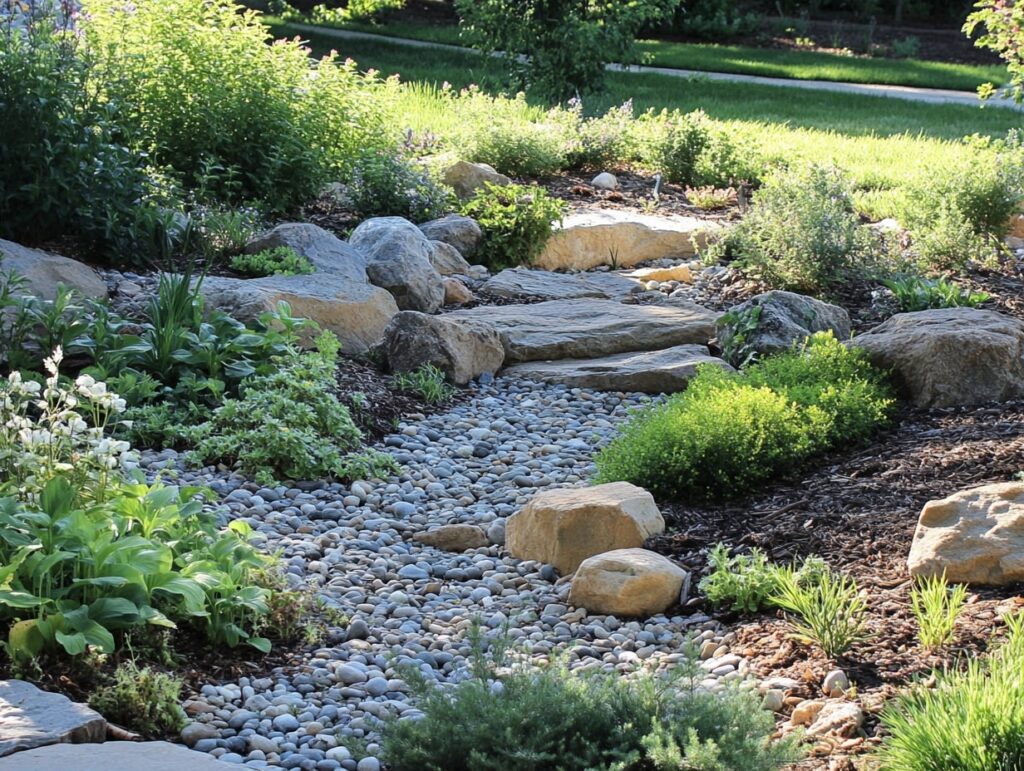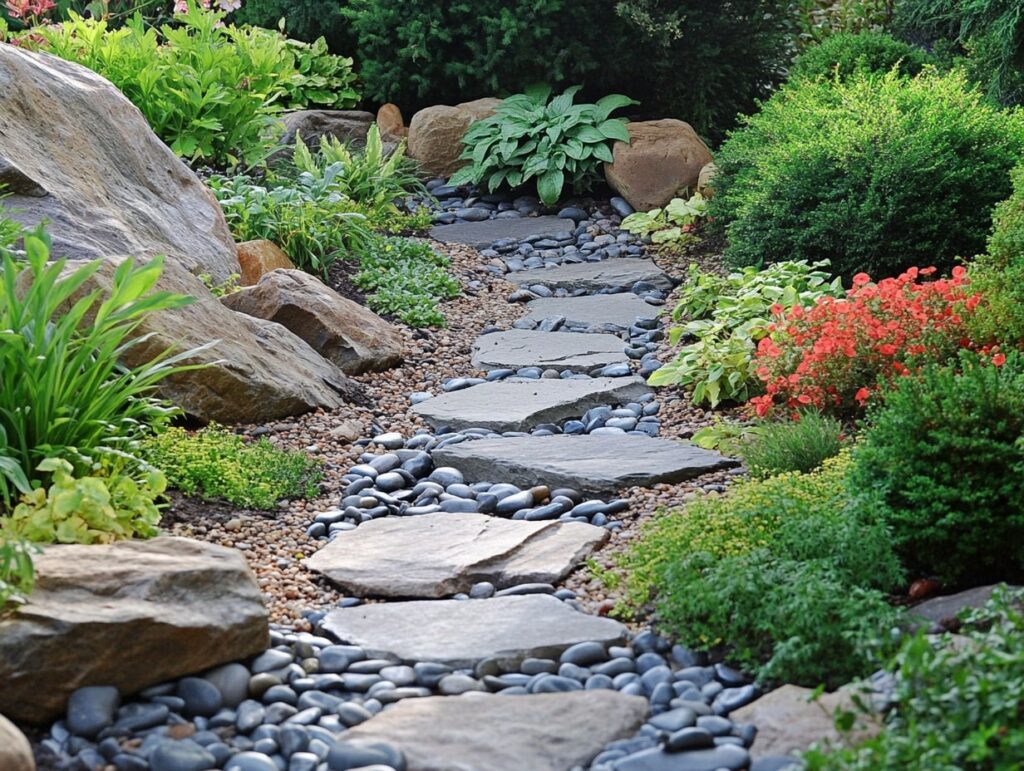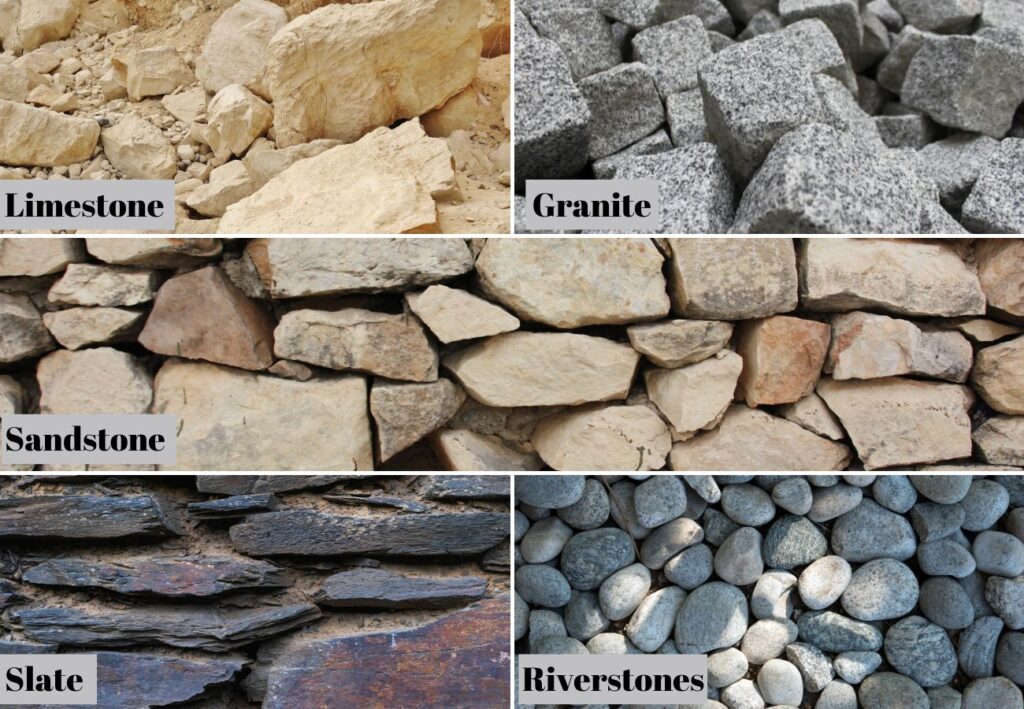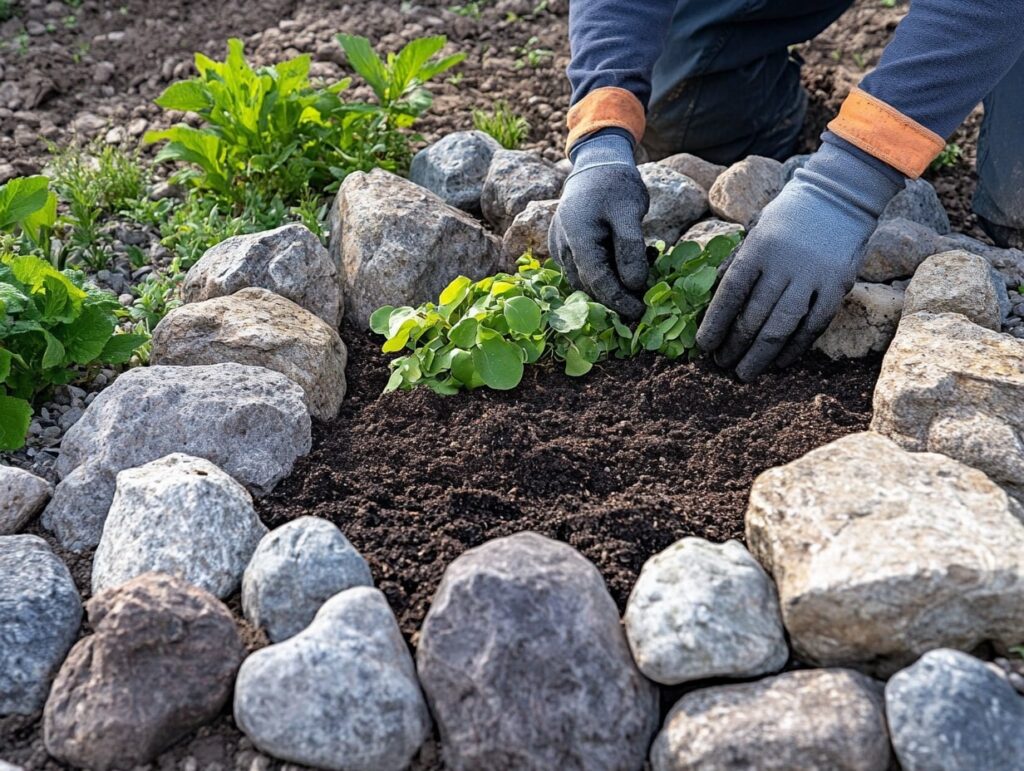Creating a gorgeous rock garden combines creativity with the beauty of nature. You’ll find that rock gardens are low-maintenance, making them perfect for those who appreciate beauty without the constant upkeep.
Start with selecting the right rocks and plants that complement each other in both color and texture.
It’s not all about the rocks, though. Choose hardy plants like succulents and evergreens to thrive in your rock garden. The right placement can transform even a small space into a stunning focal point in your yard.
Remember that rock gardens are versatile and can be tailored to fit any landscape. Whether you have a sprawling backyard or a compact city garden, you can create a serene, beautiful space by strategically placing rocks and selecting plants that thrive in various conditions.
Getting Started with Rock Gardening
Rock gardening is an engaging and rewarding way to transform a section of your yard into a visually appealing, low-maintenance landscape. To begin, focus on the essentials such as understanding the basics, choosing the right location, and designing an effective layout.
Understanding Rock Garden Basics
Rock gardens mimic rugged landscapes by using stones and plants that thrive in rocky environments. The goal is to create a natural, balanced ecosystem that looks beautiful year-round.
- Key Elements:
- Rocks: Use a variety of sizes for a natural look.
- Plants: Opt for drought-tolerant and low-growing species like sedums and alpine daisies.
- Soil: Ensure well-drained soil, often achieved by adding sand or gravel.
Choosing the Right Location
The location sets the stage for your rock garden’s success. Ideally, you want a spot that offers good drainage and plenty of sunshine.
- Sunlight: Most rock garden plants require 6-8 hours of sunlight daily.
- Drainage: Avoid areas that collect water. Use raised beds if your yard lacks natural drainage.
- Accessibility: Make sure the area is easy to reach for planting and maintenance but not a heavily trafficked spot.
Designing Your Rock Garden Layout
The layout should be both functional and aesthetically pleasing. Start with a sketch or plan of where you want to place rocks, plants, and other features.
- Planning Tips:
- Focal Points: Use large rocks as central features.
- Plant Grouping: Arrange plants in clusters for natural-looking groups.
- Pathways: Include small pathways for easy navigation and maintenance.
Use these guidelines to start your journey towards creating a beautiful rock garden that not only enhances your outdoor space but also offers a low-maintenance and visually stunning landscape.
Selecting Your Rocks and Stones
Choosing the right rocks is vital for a beautiful and coherent rock garden. You’ll want to consider the types of rocks and their placement to create an appealing and harmonious atmosphere.
Types of Rocks to Consider
When selecting rocks for your garden, look for ones that complement each other in terms of color and texture.
Limestone: Light-colored and porous, ideal for creating a natural, weathered look.
Granite: Durable and available in various shades, adding long-lasting beauty.
Sandstone: Softer texture with warm hues, great for a mellow, relaxing feel.
Slate: Flat and dark, perfect for sleek, modern designs.
River Stones: Smooth and rounded, ideal for pathways and decorative accents.
Placement and Arrangement Tips
Place larger rocks first to establish the structure of your garden. Position them in a way that mimics natural landscapes, avoiding symmetrical patterns.
Group rocks in odd numbers for a more organic look. Smaller stones and pebbles can fill gaps and provide contrast.
Consider the height and shape of rocks. Taller rocks can create focal points, while flatter ones offer stability.
Integrate plants around rocks, ensuring they’re not overshadowed. This balance will enhance both the rocks and the greenery, bringing your garden to life.
Plant Selection for Rock Gardens
Choosing the right plants is paramount for a thriving and beautiful rock garden. You’ll need plants that can handle tough, rocky soil and often dry conditions while adding visual interest and color.
Best Plants for Your Rock Garden
When selecting plants, look for species that thrive in well-drained soil and can tolerate drought. Succulents like Sedum and Sempervivum are excellent choices. They store water in their leaves, making them resilient during dry spells.
Alpines such as Edelweiss and Campanula are also well-suited because they naturally grow in rocky, mountainous areas. These plants have adapted to thrive on minimal soil and nutrients.
Ground covers like Creeping Thyme and Aubrieta help control weeds and spread easily, filling gaps between rocks. Their vibrant blooms add color and their low height fits well with the rugged terrain. Ferns and Mosses are perfect for shady, damp areas of your garden.
How to Plant in Rocky Soil
Start by clearing the area of weeds and large stones. Mix organic matter such as compost into your rocky soil to improve nutrient content and drainage. Create small pockets or crevices in the rocks where plants can root securely.
When planting, gently remove the plant from its container, loosening the roots slightly. Place the plant into the prepared hole, firming the soil around it to provide stability. Water it well to help establish roots.
Use a thick layer of mulch or small stones around your plants to help retain moisture and reduce weed growth. Gradual watering is essential, as rocky soil can drain quickly. Regularly check your plants and water them during dry spells to ensure they remain healthy.
Caring for Your Rock Garden
Proper care ensures that your rock garden remains stunning throughout the seasons. Focus on efficient irrigation and keeping weeds at bay.
Irrigation Techniques
Watering rock gardens requires a delicate balance. Overwatering can cause root rot, while underwatering stresses plants. Aim for deep, infrequent watering to encourage strong roots.
Using a soaker hose or drip irrigation system can deliver water directly to the soil, minimizing evaporation.
Morning is the best time to water. It allows plants to absorb moisture before the heat of the day. Mulch with gravel or small rocks to retain moisture and reduce evaporation. Be cautious with the water-holding capacity of the soil; sandy soils dry out faster than clay-based ones.
Weed Control and Maintenance
Weeds compete for nutrients and mar the garden’s beauty. To keep weeds in check, begin by laying down a geotextile fabric before planting. This barrier helps prevent weed growth without inhibiting water drainage.
Regular weeding by hand or using a small hoe is essential. Focus on young weeds, as they are easier to remove. Apply an organic mulch layer to suppress weed growth further.
Ensure tidy edges around your garden to discourage weed invasions from surrounding areas. Also, incorporate routine checks to remove any debris or fallen leaves that may foster weed growth.
Seasonal Care and Upkeep
Maintaining a rock garden throughout the year requires attention to detail and timely interventions. You will need to prepare for seasonal changes and consider regular enhancements to keep your garden thriving.
Preparing for the Changing Seasons
Spring: Start by removing debris such as fallen leaves and dead plants accumulated over the winter. Prune back any overgrown vegetation and divide perennials if necessary.
Summer: Ensure that your garden is well-watered, especially during dry spells. Use mulching to retain moisture and prevent weeds. Regularly check for pests and diseases.
Autumn: Rake off fallen leaves and deadhead blooming plants to promote growth. Consider adding a light layer of compost to nourish the soil.
Winter: Protect sensitive plants from frost by covering them with burlap or frost cloth. Prune dead branches and ensure good drainage to prevent waterlogging.
Rock Garden Enhancements and Updates
Throughout the year, you may wish to add new plants or features to enhance your rock garden. New Plants: Choose drought-tolerant, low-maintenance perennial plants that look good in all seasons. Position them strategically to create year-round interest.
Decorative Stones: Refresh the garden’s appearance by adding new rocks or repositioning existing ones. This can help to maintain an organized and visually pleasing layout.
Soil Maintenance: Regularly check your soil’s pH and nutrient levels. Amend the soil with organic matter, compost, or specialized fertilizers suitable for your plants.
Restoration: Repair any damage to rock formations or pathways. Ensure that structural elements like edging stones are stable and in good condition.
Creating a rock garden is not just about placing stones and plants together; it’s about designing a harmonious space that blends with nature’s beauty while requiring minimal upkeep.
By carefully selecting the right rocks, plants, and layout, you can transform any outdoor area into a stunning, low-maintenance retreat. Whether you have a large or small space, the versatility of rock gardens allows them to fit seamlessly into any landscape.
With thoughtful planning and ongoing care, your rock garden will become a timeless, tranquil haven that enhances your yard’s aesthetic appeal and provides year-round enjoyment.
